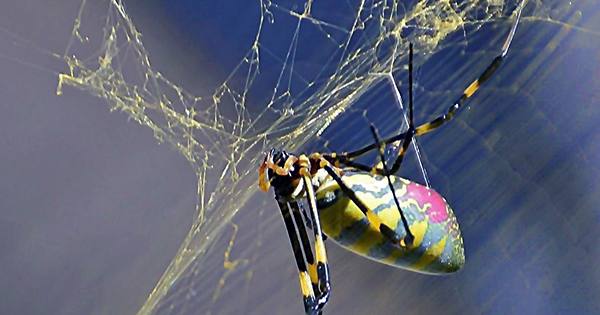Only a few spiders hunt in groups, but scientists have yet to figure out how they coordinated their movements to take down such large prey. A new study claims to have solved the puzzle, providing a method by which the spiders coordinate their rhythmic approach-and-stop techniques when hunting in groups. The scavenging arachnid’s one social spider species, Anelosimus eximius, is reported to attack victims in “packs.” The behavior of groups moving together to take down enormous insects that would be out of limits for a solitary hunter is the subject of recent research published in Proceedings of the National Academy of Sciences.
To figure out how these attacks work, researchers threw a constructed vibrating fake lure into the web of A. Eximius and watched what happened next. According to their findings, pack hunting among these spiders isn’t led by a single aggressor, but rather the outcome of all spiders “listening” to what’s going on the web and reacting appropriately.
“There is no hunt leader,” corresponding author Raphael Jeanson of the French National Centre for Scientific Research (CNRS) told IFLScience. “Vibrations travel across the web, and each spider incorporates information.” This enables the spiders to respond quickly and flexibly to any changes in the hunt, such as the number of spiders engaged [and] fluctuations in the strength of vibrations created by prey fighting in the web.”

These spiders can coordinate their movement to take down prey up to several hundred times larger than a single spider by listening to their other colleagues and the intensity of the vibrations emanating from their victim. Because of their communal adaption, they can feast on crickets, grasshoppers, and butterflies, which would be impossible for a single spider to kill on their own.
The researchers plan to investigate the factors that influence arachnid social behavior next. While minor in comparison to solitary spider species, this group might provide insight into the phases of arachnid development. “We want to know what mechanisms were involved in spiders’ transitions to permanent sociality,” Jeanson explained.
“There are over 50,000 species of spiders, with the great majority being solitary as adults and barely 20 sociable species. However, during the early stages of their development, the great majority (if not all) of solitary spider species are gregarious (i.e. sociable), after which they disperse to live alone.” “What prevents spiders from scattering and behaving socially throughout their lives?” says the researcher. “This is our inquiry.”
















